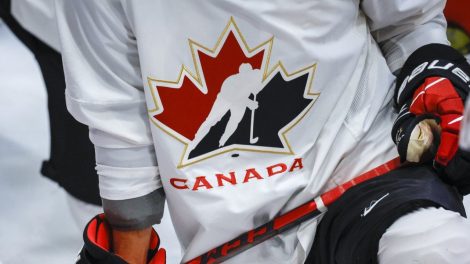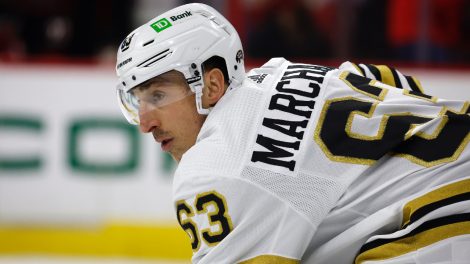ANAHEIM, Calif. — So you beat the San Jose Sharks, the Western Conference champs last year. Congrats, big boy — you’re a real, live playoff team now.
Jumbo and Patty. Norris Trophy candidate Brent Burns. It was like skating around ZZ Top down there in San Joe, but you earned it.
Your reward? The Anaheim Ducks, who are bigger, nastier, younger and perhaps even hungrier, with their history of choking in Game 7s at the Honda Center.
So how does Edmonton, the worst faceoff team in the league (47 per cent) and in totally uncharted territory in Round 2, defeat Anaheim, the NHL’s best faceoff team (54.7 per cent) that is in Round 2 for the third time in the past four springs?
We rustled up three NHL coaches to help us figure that out. You don’t get to know who they are, but you do get to know what they told us:
—
• The faceoff circle. This is a primary concern for these coaches, when you put them in Todd McLellan’s shoes.
“They have their three guys (Ryan Kesler, Ryan Getzlaf, Antoine Vermette), and they’ll have two of them on the ice for any important draw,” said Coach A. “The two Ryans will take a lot of faceoffs on specials. With Kesler there are a lot of 50/50 pucks, where the wingers can get in there and help. Getzlaf is a longer win. He draws it right it back to his D.”
“It’s a mismatch at centre ice with Getzlaf, Kesler and Vermette,” admits Coach B. “They start with the puck all the time. That will create problems — especially on special teams.”
[relatedlinks]
• Anaheim’s mobile defencemen aren’t quite so daunting with Cam Fowler out of the lineup and Sami Vatanen dinged up. Both are question marks, with Fowler looking like he’s closer to playing than Vatanen.
“They have a really mobile D and goalie that plays pucks well. They’re tough to forecheck,” said Coach B.
“Fowler is a big player for them,” added Coach A. “Their defence skates it out of the zone – they’d rather skate it than pass it — and that’s really, really important. They skate it and then distribute it, usually to their centremen. San Jose’s forwards get the puck early in the D-zone and take it. Not Anaheim.”
• The Ducks are more willing to engage, both during play and after whistles, which might actually help Edmonton.
Particularly Getzlaf and Corey Perry, two big, skilled forwards who will hang on to the puck down low until someone can knock them off it. Todd McLellan might favour Eric Gryba over Matthew Benning at times in this series on defence, one coach thought, but we’re talking about swapping out third-pairing guys here.
“The two Ryans have the puck a lot,” said Coach A. “You have to try and take them away. Getzlaf will have it a lot. He’ll turn back to his left, between the blue line and the hashmarks, and he’ll make a play most guys can’t make.”
“Anaheim has an edge in experience,” said Coach C. “A lot of experienced playoff performers who know all about raising their level as a series goes on. They’re more nasty. Getzlaf, Perry, (Kevin) Bieksa, Kesler, Vermette — veteran players who have an edge.”
That Leon Draisaitl spear on Chris Tierney will come with a far steeper cost should Edmonton want to play that game against the Ducks, the coaches agreed.
• Connor McDavid will see Ryan Kesler’s line ad nauseum.
“It’s a different animal” than facing the pairing of Justin Braun and Marc-Edouard Vlasic, said Coach B. “Carlyle is married to matchups. If McDavid plays 30 minutes, Kesler will play 30. So Todd can run McDavid out on a D-zone faceoff against Getzlaf and cost Getzlaf and their more offensive guys some ice time. Get them out of rhythm.”
McLellan said after the San Jose series that he was just fine with the Sharks matchup; that it freed up space and opportunity for the other lines. He was messing up his line rotation just to free McDavid from the Sharks top pairing but instead challenged McDavid to find a way to be productive.
“Playoffs is about fighting for space, not looking for space,” said Coach C. “If he wants more, he’ll have to fight for it. His coach didn’t rescue him in Round 1.”
[snippet id=3317575]
• Despite some challenges, Edmonton can score and skate with Anaheim. And they’ll have the edge in goal, with Cam Talbot seen as slightly more consistent than John Gibson.
“The Ducks don’t score much, but they can play in low-scoring games,” said Coach B. “But you’re in every game with them, and Edmonton scores more easily.”
Anaheim averaged 3.50 goals per game in their Round 1 sweep, but that’s deceiving due to some porous Calgary goaltending. During the season the Ducks ranked 18th in scoring (2.68) while Edmonton was ranked at No. 8 (2.96).
“Edmonton will need the depth goals that they got against San Jose,” said Coach B, noting the four game-winners that came off the sticks of Zack Kassian (2), David Desharnais and Anton Slepyshev.
“The way Edmonton played at the end of the year is the way they’re playing now,” said Coach C. “There’s a maturity about their game now. They win a lot of board battles, so they control the puck a lot – or win it back after losing a draw.
“Size on the wall and speed in the middle. That’s how Chiarelli has built this team.”









